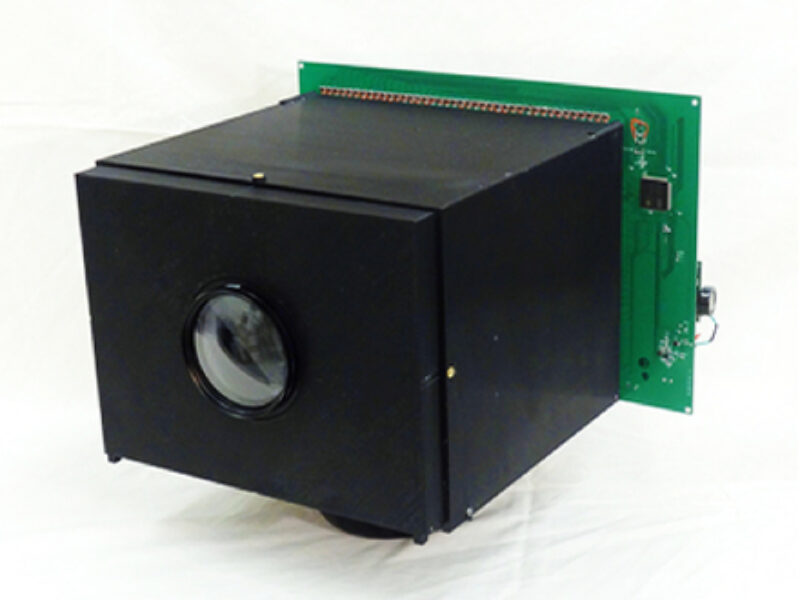
Self-powered image sensor could charge smartphone
And when the image sensor is not capturing images it could still be harvesting energy and be used to charge up a local battery. This could be useful for wireless sensor networking (WSN) nodes and the Internet of Things and potentially for personal devices such as smartphones.
The Columbia team, led by Shree Nayar, Professor of Computer Science at Columbia Engineering, has designed a pixel circuit that not only measures the incident light but also converts that light into electrical power to drive the circuit. The image is black and white and the resolution is 30 pixels by 40 pixels but the technique appears to be readily scalable.

Array of 30 by 40 photodiodes. Since the photodiodes have leads on two of their sides, each one was oriented at 45 degrees so as to achieve a lower pixel pitch. Also seen on the front of the board are the readout transistors and the microcontroller. Source: Columbia University.
Nayar’s team has made use of the fact that the key component present in both the image sensor and the solar cell is the silicon photodiode. To date these photodiodes have been optimized independently resulting in a different approach; in the photodiode in a camera pixel is used in a photoconductive mode while in a solar cell it is used in a photovoltaic mode.
Nayar, working with research engineer Daniel Sims and consultant Mikhail Fridberg of ADSP Consulting LLC, used off-the-shelf components to fabricate an image sensor in which each pixel’s photodiode is always operated in the photovoltaic mode.
The pixel design has two transistors, in contrast to a conventional three-transistor image sensor pixel. During each image capture cycle, the pixels are used first to record and read out the image and then to harvest energy and charge the sensor’s power supply – the image sensor continuously toggles between image capture and power harvesting modes. When the camera is not used to capture images, it can be used to generate power for other devices, such as a phone or a watch.

Two-transistor image pixel circuit that can capture images and harvest energy. Source: Columbia University.
This figure shows the pixel circuit for the power-harvesting sensor. The photodiode PD is operated in photovoltaic mode with zero bias (conventional image sensor diodes are operated with back bias). The voltage of the anode of PD increases to a level proportionate to the energy of the incident light. In this case PD draws zero power to produce a voltage proportionate to the incident light, and since it is not biased it does not produce any dark current. An important feature of the design is that emitter of transistor Q1 can be switched between ground (for resetting) and a power supply (for harvesting).
"Digital imaging is expected to enable many emerging fields including wearable devices, sensor networks, smart environments, personalized medicine, and the Internet of Things. A camera that can function as an untethered device forever – without any external power supply – would be incredibly useful," said Professor Nayar in a statement.
Nayar points out that such a camera could be used as an energy harvester to continuously to top up a rechargeable battery in a mobile device or other piece of equipment. "We took an extreme approach to demonstrate that the sensor is indeed truly self-powered and used just a capacitor to store the harvested energy."
Professor Nayar continued: "Even though we’ve used off-the-shelf components to demonstrate our design, our sensor architecture easily lends itself to a compact solid-state imaging chip. We believe our results are a significant step forward in developing an entirely new generation of cameras that can function for a very long duration – ideally, forever – without being externally powered."
The team is presenting its work at the International Conference on Computational Photography at Rice University in Houston, April 24 to 26.
www.cs.columbia.edu
www.adspconsulting.com
 If you enjoyed this article, you will like the following ones: don't miss them by subscribing to :
eeNews on Google News
If you enjoyed this article, you will like the following ones: don't miss them by subscribing to :
eeNews on Google News




